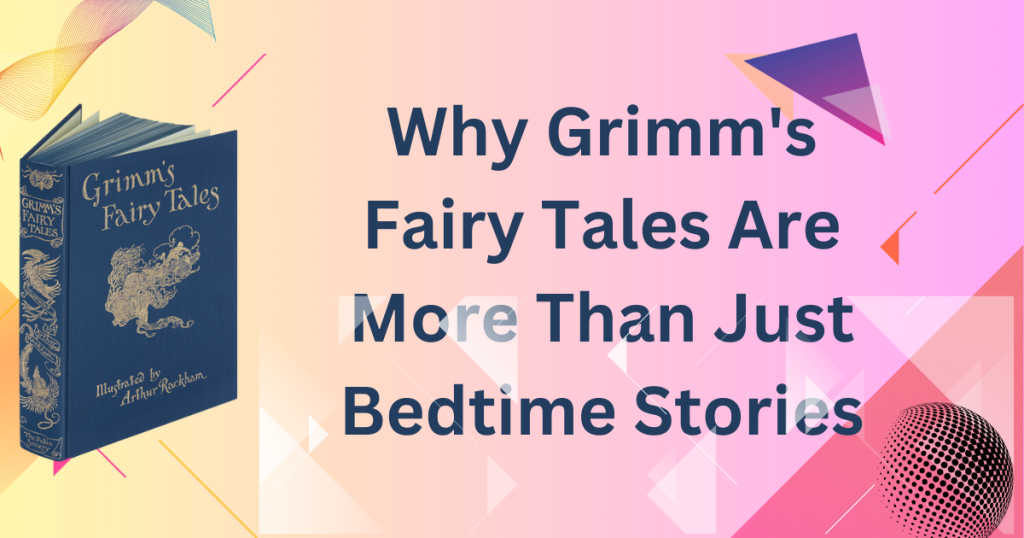
The timeless allure of Grimm's fairy tales
They have captivated generations for over two centuries. Although many see them as simple bedtime stories, they hold much more beneath the surface. From their deep themes to their cultural significance, these stories are a treasure trove of wisdom, reflection and timeless appeal.
A Short History of Grimm's Fairy Tales
The Warm Brothers: Who Were They?
Jacob and Wilhelm Grimm, known as the Brothers Grimm, were German scholars, linguists, and cultural researchers. In the early 19th century, they embarked on a mission to collect and preserve the oral folklore of their homeland out of a desire to preserve their cultural heritage.
Jacob and Wilhelm Grimm, known as the Brothers Grimm, were German scholars, linguists, and cultural researchers. In the early 19th century, they embarked on a mission to collect and preserve the oral folklore of their homeland out of a desire to preserve their cultural heritage.
Origin of stories
The stories Grimes composed were not his own. They were passed down from generation to generation, rooted in European folklore. These stories were raw, dark and full of moral lessons. The Grimms originally published them in 1812, and they have since been adapted, edited and translated.
Evolution over time
The original were a far cry from the neat version that many people know today. Over the years, these stories have been softened to suit a younger audience, but their essence remains, preserving the rich traditions and lessons of the past.
Beyond the Surface: Hidden Layers in Grimm's Fairy Tales.
These are not just entertaining stories. They are loaded with complex themes and messages that speak to universal human experiences.
Morality and ethics
At their core, many of these stories grapple with questions of right and wrong. Characters often face moral dilemmas, and their choices lead to consequences that reinforce moral principles. For example, stories like “Hansel and Gretel” explore the virtues of ingenuity and resilience.
The role of justice and revenge
Justice is a recurring theme. Characters who do wrong are often punished while those who do good are rewarded. This theme reflects the social values of the time, where justice was seen as both inevitable and necessary.
Social Hierarchy and Class Struggle
Many of Grimm’s stories depict the struggle between different social classes. Stories like “Cinderella” highlight the stark contrast between wealth and poverty, emphasizing the importance of kindness and humility over material wealth.
Unraveling the Psychological Effects of Grimm's Fairy Tales
These stories have a profound psychological impact, especially on young minds, shaping their understanding of the world and themselves.
Impact on childhood development
Play an important role in childhood development. They introduce children to complex emotions, helping them navigate fear, insecurity, and moral questions in a safe and controlled environment.
Archeology and the use of symbols
The stories are full of archetypal characters—the hero, the villain, the damsel in distress—that resonate across cultures and generations. These symbols serve as metaphors for life’s challenges and triumphs, making the stories relatable and timeless.
Alleviating fears and anxieties
Many of the stories deal with dark and scary themes, such as death, abandonment and evil. By engaging with these topics, children can explore their fears in a safe environment, allowing them to overcome their anxieties.
How Grimm's Fairy Tales Reflect Cultural Values
These stories reflect the cultural norms, beliefs and values of the societies from which they originated.
Representation of gender roles
Often reinforce traditional gender roles, with male characters depicted as brave and strong, while female characters are often passive and virtuous. However, some stories challenge these stereotypes, offering a more complex and diverse portrayal of gender.
Cultural norms and beliefs
These stories are rooted in the cultural values of 19th century Europe. They reflect the fears, hopes and moral codes of the time, offering insight into the emerging society.
The global impact of stories
Over time, outgrew their European origins and became part of the world’s cultural heritage. Their themes, characters, and lessons resonate across cultures, making them universally appealing.
The lasting legacy of Grimm's fairy tales in modern culture
Grimm’s fairy tales continue to influence contemporary storytelling in various forms.
Adaptations in film and literature
The stories have inspired numerous adaptations in film, literature, and other media. From Disney movies to modern retellings, these stories have been reimagined in countless ways, proving their timelessness.
Ongoing relevance in contemporary storytelling
Despite their age, the themes and lessons are still relevant today. They describe universal human experiences such as love, fear, and the struggle between good and evil, making them as meaningful now as they were two centuries ago.
The role of fairy tales in education
Often used in educational settings to teach moral lessons, cultural history, and literary analysis. Their rich symbolism and layered narratives make them valuable tools for learning and reflection.
Why Grimm's Fairy Tales Will Continue to Endure
These are more than just stories; They are a window into the human experience. Their deep themes, psychological insights, and cultural significance ensure that they will continue to captivate audiences for generations to come.
Frequently Asked Questions
What makes Grimm's fairy tales different from other fairy tales?
These are often deep and complex, with themes that cover morality, justice, and human nature, making them unique compared to more tidy versions of fairy tales.
Are Grimm's Fairy Tales Suitable for Children?
While some of the stories may be intense, many have been adapted for children. However, the original versions are more suitable for deeper and older readers.
How have Grimm's Fairy Tales influenced modern storytelling?
They have significantly influenced literature, film and popular culture, providing archetypal characters and themes that continue to resonate today.
What are some common themes in Grimm's Fairy Tales?
Common themes include justice, morality, social class, and the battle between good and evil.
Why are Grimm's fairy tales still popular today?
Their timeless themes, complex characters, and rich cultural significance make them relevant and fascinating even in modern times.
